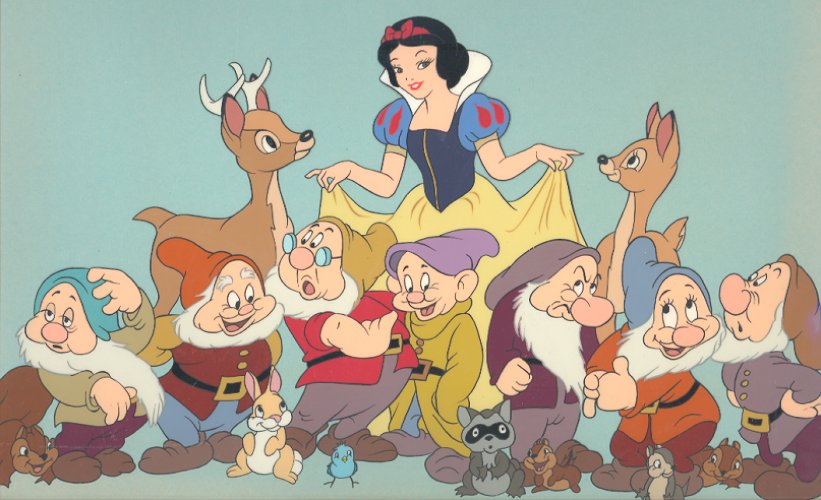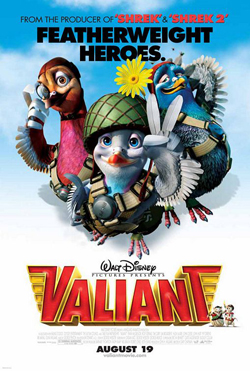The Future of 2D Hand-Drawn Animation
The animation world continues to experience a major move towards 3D CGI. One by one, the major producers of traditional 2D hand-drawn animation are closing their units and going strictly to 3D. Certainly in terms of feature films, there isn’t a lot of 2D left in the pipelines. Will this trend move around to broadcast and eventually to the web? What does the future hold for hand-drawn animation?
This is certainly a topic that gets plenty of water cooler time in animation circles. Some people believe the move is inevitable and others feel it is simply a fad. In a recent discussion in our studio, it was compared to the resistance the movie industry in the 1950’s had to the impact of television on their future. Are 2D animation producers fighting a losing battle trying to hang on to an obsolete art form? I don’t think so, but there is definitely a transition to be managed.
This really isn’t a new story in the art and media world, just a different incarnation. Imagine being a painter faced with the challenge of photography, or a theatrical stage producer with the emergence of motion pictures, or a television broadcaster faced with the rise of the Internet. New art and media forms constantly emerge and existing forms evolve. They don’t necessarily die off, they adapt and change. 2D hand-drawn animation will also survive by adapting and evolving.
The question isn’t will 2D evolve, but rather how should 2D evolve? Ultimately the most important component in creating entertaining animation is the content. Whether in the long form of a feature film or the short form of a cartoon, animated films are basically the same as live action in that they must entertain and/or inform the viewer. The requirements of the story, the message, the content, should dictate a great deal about how it is presented. It is a matter of audience perception as opposed to artistic merit. Audiences, right or wrong, are still the driving force in commercial media. Perhaps 3D CGI is a fad or perhaps it isn't. But as with the advent of talking pictures and later Technicolor, audiences began to move away from silent and black & white films. It took Cable TV and a need for content to bring them back. It is a commercial market reality. People are attracted by the visuals and stay around for the content. Recent failures like “Father of the Pride” proved that 3D CGI could attract a TV primetime audience but failed to hold them with weak, predictable and dated plots. Yet, “South Park” continues to prove that minimal 2D animation with clever contemporary writing can be a huge success. However, for comparable content 2D can’t really expect to compete with 3D CGI visually. To try to compete as a photo-real substitute or even a Disney-style “ultra-realistic” form is a losing battle for 2D animation. Even Disney has now abandoned the classic Disney style.
Would the “Simpsons” be made as 3D CGI if they were just beginning production instead of completing their 16th successful season? I don’t think so. One clue to the weakness of CGI is how poorly it adapts to more cartoony cartoons. Both “South Park” and the “Simpsons” benefit from their simple graphical styles and 3D wouldn’t add to that, it would detract. Just watch “Looney Tunes: Back in Action” to see that CGI didn’t add anything to the old magic, even under the masterful hand of Eric Goldberg. Imagine trying to do the same to Tex Avery cartoons. Would “Dexter’s Laboratory” be better in 3D? No, it would be another “Jimmy Neutron”, not the landmark that inspired a generation of cartoon series.
2D has its strength in visual interpretation and caricature. It shines in the extremes of distortion and simplicity of graphical design. The UPA style of the late 1940s and 1950s was visionary, not in its anti-Disney revolution but in its foretelling of the evolution of hand-drawn animation. Time and technology will have a lot to do with the shaping of the 2D evolution but at least, in my opinion, it will survive and prosper as it finds its new place which isn’t new, just different.
This is certainly a topic that gets plenty of water cooler time in animation circles. Some people believe the move is inevitable and others feel it is simply a fad. In a recent discussion in our studio, it was compared to the resistance the movie industry in the 1950’s had to the impact of television on their future. Are 2D animation producers fighting a losing battle trying to hang on to an obsolete art form? I don’t think so, but there is definitely a transition to be managed.

This really isn’t a new story in the art and media world, just a different incarnation. Imagine being a painter faced with the challenge of photography, or a theatrical stage producer with the emergence of motion pictures, or a television broadcaster faced with the rise of the Internet. New art and media forms constantly emerge and existing forms evolve. They don’t necessarily die off, they adapt and change. 2D hand-drawn animation will also survive by adapting and evolving.
The question isn’t will 2D evolve, but rather how should 2D evolve? Ultimately the most important component in creating entertaining animation is the content. Whether in the long form of a feature film or the short form of a cartoon, animated films are basically the same as live action in that they must entertain and/or inform the viewer. The requirements of the story, the message, the content, should dictate a great deal about how it is presented. It is a matter of audience perception as opposed to artistic merit. Audiences, right or wrong, are still the driving force in commercial media. Perhaps 3D CGI is a fad or perhaps it isn't. But as with the advent of talking pictures and later Technicolor, audiences began to move away from silent and black & white films. It took Cable TV and a need for content to bring them back. It is a commercial market reality. People are attracted by the visuals and stay around for the content. Recent failures like “Father of the Pride” proved that 3D CGI could attract a TV primetime audience but failed to hold them with weak, predictable and dated plots. Yet, “South Park” continues to prove that minimal 2D animation with clever contemporary writing can be a huge success. However, for comparable content 2D can’t really expect to compete with 3D CGI visually. To try to compete as a photo-real substitute or even a Disney-style “ultra-realistic” form is a losing battle for 2D animation. Even Disney has now abandoned the classic Disney style.

Would the “Simpsons” be made as 3D CGI if they were just beginning production instead of completing their 16th successful season? I don’t think so. One clue to the weakness of CGI is how poorly it adapts to more cartoony cartoons. Both “South Park” and the “Simpsons” benefit from their simple graphical styles and 3D wouldn’t add to that, it would detract. Just watch “Looney Tunes: Back in Action” to see that CGI didn’t add anything to the old magic, even under the masterful hand of Eric Goldberg. Imagine trying to do the same to Tex Avery cartoons. Would “Dexter’s Laboratory” be better in 3D? No, it would be another “Jimmy Neutron”, not the landmark that inspired a generation of cartoon series.
2D has its strength in visual interpretation and caricature. It shines in the extremes of distortion and simplicity of graphical design. The UPA style of the late 1940s and 1950s was visionary, not in its anti-Disney revolution but in its foretelling of the evolution of hand-drawn animation. Time and technology will have a lot to do with the shaping of the 2D evolution but at least, in my opinion, it will survive and prosper as it finds its new place which isn’t new, just different.

5 Comments:
This is the best description of that problem I found so far! I agree with you that traditional animation have to change in order to survive. Animators are moving over to computers instead of drawing by hand. The problem is that each genre have their own possibilities and limitations, some takes short time, others take long time. Traditional animation takes very long time, good quality 3D takes almost the same time. Cutout and 2D is the fastest way to produce cartoons and is therefore the most used genre in digital animation. I'm working on a cutout software that even children can create movies with, but it's full digital and not based on traditional concepts. Traditional animation is impossible to speed up on level with cutout. It requires skills above normal also. 3D has almost the same possibilities as traditional animation to express a story, but it requires lot more technical skills and hardware. My suggestion is that animation studioes should consider traditional animation as an equal alternative to 3D and not as and outdated genre. What about using simple 3D as reference and draw the details by hand?
2 1/2 years have past since I originally wrote this article. Very little has changed. Most 3D is still just eye candy. There are examples of really good 3D films like Flushed Away and The Incredibles and there are some real turkeys too. The same can be said for 2D. The content, the concept and the story are still the determining factors and if anything I am more convinced than ever that 3D is just an alternative approach and not a replacement. It is another possibility, not the only possibility, for producing quality animated content.
I think all animators will eventually move into the 3d realm but I think this is a mistake.
Animating companies such as dreamworks and pixar make their feature lengths more and more realistic.
But to what limitations will they stop?
I thought cartoons and animation was meant to be set aside from real life. A place for children to escape and dream of another world.
But eventually this will have to come to an end when animation looks like the heavily special effects cgi films.
So i say, bring back disney and keep the 2d going.
Simpsons and south park would be no where near as famous if it weren't for their traditional animation styles.
Why fix something that isn't broken.
The problem I face after recently graduating is that I feel as though I am not animating in the traditional sense with cutout animation. The hand-drawn 2D studios are gone or almost and I have nowhere to apply. I pondered quitting the industry several times just because I can't animate hand drawn animation in a studio. Programs like Harmony or god forbid flash, is just another 3D form meant to cheapen labor, not progress. I came into the industry thinking I would draw what I would animate and only be limited by my skills as an artist, not by a software. Unfortunetly, we have already witnessed the death of cels, along with that the death of pure classical animation. Computers aren't going away and students today don't value drawing as much as we used to, most 3D animators I knew from when I was in school are programmers and don't even draw at all. I hate to admit it but the future looks really bad for animation.
I suggest that you visit Toon Boom Animation They seem to have some good resources related to 2D work and the need for talent. I don't think your assessment is totally accurate. There are still opportunities for hand drawn animation and certainly for story artists and character designers.
Post a Comment
<< Home